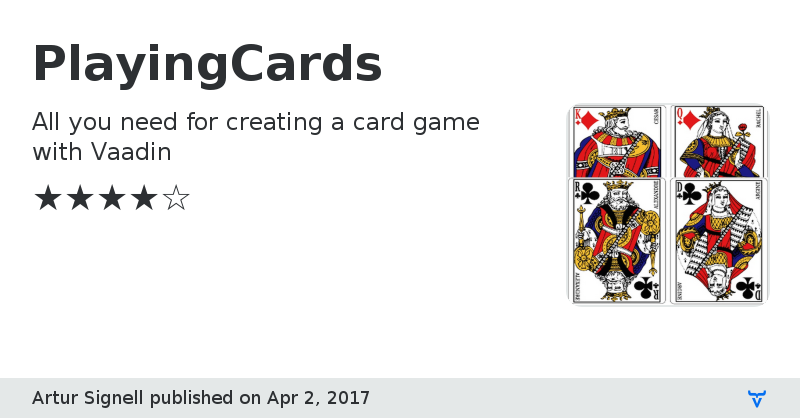PlayingCards - Vaadin Add-on Directory
All you need for creating a card game with Vaadin
PlayingCards contain Card, Deck, CardStack and CardPile widgets for creating card games using Vaadin:
* Card represents a single playing card that can be front or back side up. To avoid cheating the card information is not sent to the browser if the back side is up.
* Deck contains a collection of cards and the top card can be drawn.
* CardStack contains 0..N cards that are ordered below each other so the value of all cards (that are not backside up) can be seen.
* A CardPile represents a pile of cards on top of each other. Can also be empty. Nothing but the top card can every be shown.
Typically you want to place the cards inside an AbsoluteLayout so they can overlap each other. See the code fragments below for examples.
Includes one size cards (150x104). The cards are from the SVG-cards project by David Bellot.
Solitaire demo (Vaadin 6)SVG-cards
Source Code
Solitaire demo source
Solitaire demo (Vaadin 7)
Solitaire demo (Vaadin 8)
PlayingCards version 0.3.2
Added drag'n'drop support
PlayingCards version 0.4.0
Support for touch devices (e.g. iPad)
PlayingCards version 0.5.0
Vaadin 7 support
PlayingCards version 0.8.0
Supports 7.0.0.beta1
PlayingCards version 0.8.1
Built for Vaadin 7.0.0.rc1
PlayingCards version 1.0.0
Compatible with Vaadin 8